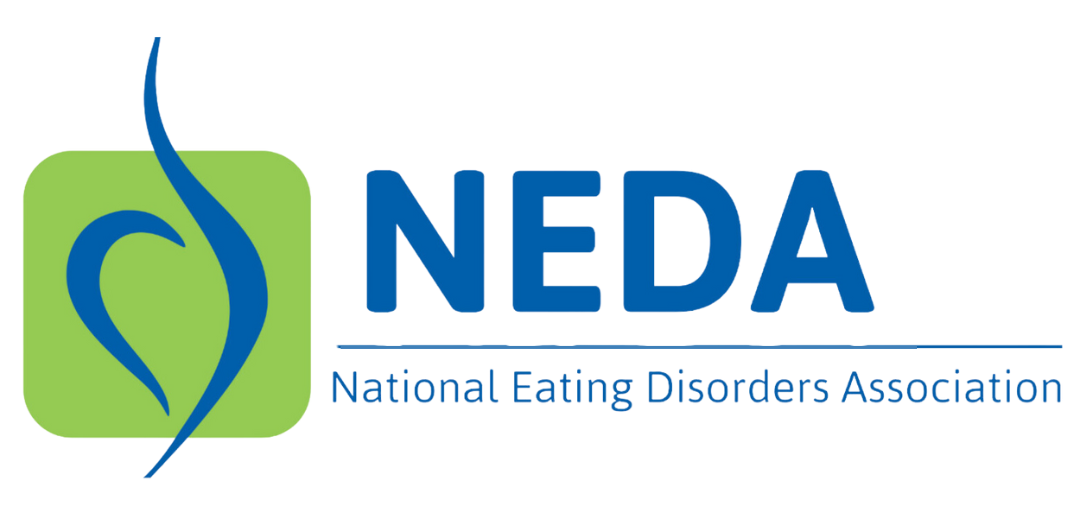by Amy Baker Dennis, PhD, FAED
There are many myths about the causes of eating disorders, how serious they are, and who develops an eating disorder. The list below includes some of the most common questions we get about eating disorders:
Are eating disorders a choice?
Eating disorders are not a choice. They are complex medical and psychiatric illnesses that people don’t choose. They are bio-psycho-social diseases, which means that genetic, biological, environmental, and social elements all play a role. Several decades of genetic research show that biological factors are an important influence in who develops an eating disorder. A societal factor, such as the media-driven thin body ideal, is an example of an environmental trigger that has been linked to increased risk of developing an eating disorder. Environmental factors also include physical illnesses, childhood teasing and bullying, and other life stressors. Eating disorders commonly co-occur with other mental health conditions like major depression, anxiety, social phobia, and obsessive-compulsive disorder. Additionally, they may run in families, as there are biological predispositions that make individuals vulnerable to developing an eating disorder.1,2
Do parents cause eating disorders?
Organizations from around the world, including the Academy for Eating Disorders, the American Psychiatric Association, and NEDA, have published materials that indicate that parents don’t cause eating disorders. Parents, especially mothers, were traditionally blamed for their child’s disorder, but more recent research supports that eating disorders have a strong biological root. Eating disorders develop differently for each person affected, and there is not a single set of rules that parents can follow to guarantee prevention of an eating disorder, however there are things everyone in the family system can do to play a role in creating a recovery-promoting environment. Psychologists have seen improvements in the speed at which children and adolescents begin to recover when including parents in the treatment process.1,2,3
Doesn’t everyone have an eating disorder these days?
Although our current culture is highly obsessed with food and weight, and disordered patterns of eating are very common, clinical eating disorders are less so. 9% of the US population, or 30 million Americans will have an eating disorder in their lifetime. A review of the research found that on average 0.7% of women and 0.5% of men had anorexia during their life, 1.4% of women and 0.3% of men had bulimia during their life, and 2.7% of women and 1.7% of men had binge eating disorder during their life, and 3.8% of women and 1.6% of men had OSFED during their life.6 The consequences of eating disorders can be life-threatening, and many individuals find that stigma against mental illness (and eating disorders in particular) can obstruct a timely diagnosis and adequate treatment.7
Are eating disorders really that serious?
Eating disorders have the second highest mortality rate of any psychiatric illness behind opiate addiction.8 Besides medical complications from binge eating, purging, starvation, and over-exercise, suicide is also common among individuals with eating disorders and is one of the leading causes of death for those diagnosed with the disorder.9 Indeed, studies have found that approximately 31% of individuals with anorexia nervosa, 23% of individuals with bulimia nervosa, and 23% of indivudals diagnosed with binge eating disorder have attempted suicide.10 Potential health consequences include heart attack, kidney failure, osteoporosis, and electrolyte imbalance. People who struggle with eating disorders also have intense emotional distress that can significantly interfere with daily functioning and impact their quality of life.2
If eating disorders are linked to biology, is there anything I can do to recover?
It’s important to remember that biology isn’t destiny. There is always hope for recovery. Although biological factors play a large role in the onset of eating disorders, they are not the only factors. The predisposition towards disordered eating may reappear during times of stress, but there are many good techniques individuals with eating disorders can learn to help manage their emotions and keep behaviors from returning. Early intervention is one of the best predictors of a positive recovery outcome and has been shown to help reduce serious long term psychological and health consequences. Recovery from an eating disorder can be a long process and requires a qualified team of professionals and the love and support of family and friends.1,11 Learn more about the recovery process here.
Aren’t eating disorders a ‘female thing’?
Eating disorders can affect anyone, regardless of their gender or sex. Despite the stereotype that eating disorders primarily occur in women, research shows that eating disorders are nearly as common among men as women and are even more prevalent among those who identify as transgender or nonbinary.12,13 Indeed, rates of eating disorders in males are increasing at a faster rate than for females and a 2015 study of US undergraduates found that transgender students were over four times more likely than their cisgender counterparts to report an eating disorder diagnosis.14,15 It’s currently not clear whether eating disorders are actually increasing in males and transgender populations or if more of those individuals who are suffering are seeking treatment or being diagnosed.15 Because physicians may have preconceptions about who eating disorders affect or may lack cultural competence, LGBTQIA+ individuals often delay treatment and their disorders have generally become more severe and entrenched at the point of diagnosis.16,17
Can someone be too young or too old to develop an eating disorder?
Eating disorders can develop or re-emerge at any age. Eating disorder specialists are reporting an increase in the diagnosis of children.18 Many eating disorder sufferers report that their thoughts and behaviors started much earlier than anyone realized, sometimes even in early childhood. Although most people report the onset of their eating disorder in their teens and young adulthood, there is some evidence that people are being diagnosed at younger ages.1
It’s not clear whether individuals are actually developing eating disorders at younger ages or if this increased prevalence is due to changes in the diagnostic criteria for eating disorders.19 Men and women at midlife and beyond are also being treated for eating disorders, either due to a relapse, ongoing illness from adolescence or young adulthood, or due to the new onset of an eating disorder.1
Doesn’t recovery from an eating disorder take a long time?
Recovery time varies from person to person. Some people get better relatively quickly, while others take much longer to improve. Recovery is often a marathon, not a sprint. For some individuals, particularly those with anorexia nervosa, recovery may take years and not everyone with an eating disorder will recover fully, many do improve with treatment.20 There are a number of factors that can affect the length of time it takes to recover from an eating disorder:
- The severity of the eating disorder
- The person’s age and weight
- The presence of other mental health conditions
- The person’s motivation to recover
- The quality of treatment
Recovery is a complex process that requires a combination of medical and psychological treatment. Medical treatment may include hospitalization, nutritional counseling, and medication. Psychological treatment may include individual therapy, group therapy, and family therapy.
Even with full recovery, many people with eating disorders find that they have to take steps to make sure they stay well. This can include planning meals; regular check-ins with a therapist, dietitian, or doctor; medication; and/or other types of self-care.1,11
Sources
[1] Schaumberg, K., Welch, E., Breithaupt, L., Hübel, C., Baker, J. H., Munn-Chernoff, M. A., Yilmaz, Z., Ehrlich, S., Mustelin, L., Ghaderi, A., Hardaway, A. J., Bulik-Sullivan, E. C., Hedman, A. M., Jangmo, A., Nilsson, I. A. K., Wiklund, C., Yao, S., Seidel, M., & Bulik, C. M. (2017). The Science Behind the Academy for Eating Disorders’ Nine Truths About Eating Disorders. European eating disorders review : the journal of the Eating Disorders Association, 25(6), 432–450. https://doi.org/10.1002/erv.2553
[2] Hambleton, A., Pepin, G., Le, A., Maloney, D., National Eating Disorder Research Consortium, Touyz, S., & Maguire, S. (2022). Psychiatric and medical comorbidities of eating disorders: findings from a rapid review of the literature. Journal of eating disorders, 10(1), 132. https://doi.org/10.1186/s40337-022-00654-2
[3] Bulik, C., & Academy for Eating Disorders. (2014). Nine truths about eating disorders. Nine Truths About Eating Disorders – Academy for Eating Disorders. https://www.aedweb.org/resources/publications/nine-truths
[4] Crone, C., Anzia, D. J., Fochtmann, L. J., & Dahl, D. (2023). The American Psychiatric Association practice guideline for the treatment of patients with eating disorders, Fourth Edition. American Psychiatric Association. Available at: https://psychiatryonline.org/doi/full/10.1176/appi.books.9780890424865.eatingdisorder0. Accessed on 8/8/23.
[5] Matheson, B., Datta, N., & Lock, J. (2023). Special report: Youth with eating disorders—time is of the essence in achieving remission. Psychiatric News, 58(02). https://doi.org/10.1176/appi.pn.2023.02.2.16
[6] Deloitte Access Economics. (2020). The Social and Economic Cost of Eating Disorders in the United States of America: A Report for the Strategic Training Initiative for the Prevention of Eating Disorders and the Academy for Eating Disorders. Available at: https://www.hsph.harvard.edu/striped/report-economic-costs-of-eating-disorders/
[7] Brelet, L., Flaudias, V., Désert, M., Guillaume, S., Llorca, P. M., & Boirie, Y. (2021). Stigmatization toward People with Anorexia Nervosa, Bulimia Nervosa, and Binge Eating Disorder: A Scoping Review. Nutrients, 13(8), 2834. https://doi.org/10.3390/nu13082834
[8] Arcelus, Jon et al. “Mortality rates in patients with anorexia nervosa and other eating disorders. A meta-analysis of 36 studies.” Archives of general psychiatry 68,7 (2011): 724-31. https://doi.org/10.1001/archgenpsychiatry.2011.74
[9] Goldstein, A., & Gvion, Y. (2019). Socio-demographic and psychological risk factors for suicidal behavior among individuals with anorexia and bulimia nervosa: A systematic review. Journal of affective disorders, 245, 1149–1167. https://doi.org/10.1016/j.jad.2018.12.015
[10] Udo, T., Bitley, S., & Grilo, C. M. (2019). Suicide attempts in US adults with lifetime DSM-5 eating disorders. BMC medicine, 17(1), 120. https://doi.org/10.1186/s12916-019-1352-3
[11] Miskovic-Wheatley, J., Bryant, E., Ong, S. H., Vatter, S., Le, A., National Eating Disorder Research Consortium, Touyz, S., & Maguire, S. (2023). Eating disorder outcomes: findings from a rapid review of over a decade of research. Journal of eating disorders, 11(1), 85. https://doi.org/10.1186/s40337-023-00801-3
[12] Mitchison, D., Mond, J., Bussey, K., Griffiths, S., Trompeter, N., Lonergan, A., Pike, K. M., Murray, S. B., Hay, P. (2019). DSM-5 full syndrome, other specified, and unspecified eating disorders in Australian adolescents: Prevalence and clinical significance. Psychological Medicine, 50(6), 981–990. https://doi.org/10.1017/s0033291719000898
[13] Nagata, J. M., Ganson, K. T., & Austin, S. B. (2020). Emerging trends in eating disorders among sexual and gender minorities. Current opinion in psychiatry, 33(6), 562–567. https://doi.org/10.1097/YCO.0000000000000645
[14] Gorrell, S.,& Murray, S. B. (2019). Eating disorders in males. Child and Adolescent Psychiatric Clinics of North America, 28(4), 641–651. https://doi.org/10.1016/j.chc.2019.05.012
[15] Diemer, E. W., Grant, J. D., Munn-Chernoff, M. A., Patterson, D. A., & Duncan, A. E. (2015). Gender Identity, Sexual Orientation, and Eating-Related Pathology in a National Sample of College Students. The Journal of adolescent health : official publication of the Society for Adolescent Medicine, 57(2), 144–149. https://doi.org/10.1016/j.jadohealth.2015.03.003
[16] Kcomt, L., Gorey, K. M., Barrett, B. J., & McCabe, S. E. (2020). Healthcare avoidance due to anticipated discrimination among transgender people: A call to create trans-affirmative environments. SSM – population health, 11, 100608. https://doi.org/10.1016/j.ssmph.2020.100608
[17] Mensinger, J. L., Granche, J. L., Cox, S. A., & Henretty, J. R. (2020). Sexual and gender minority individuals report higher rates of abuse and more severe eating disorder symptoms than cisgender heterosexual individuals at admission to eating disorder treatment. International Journal of Eating Disorders, 53(4), 541–554. https://doi.org/10.1002/eat.23257
[18] López-Gil, J. F., García-Hermoso, A., Smith, L., Firth, J., Trott, M., Mesas, A. E., Jiménez-López, E., Gutiérrez-Espinoza, H., Tárraga-López, P. J., & Victoria-Montesinos, D. (2023). Global Proportion of Disordered Eating in Children and Adolescents: A Systematic Review and Meta-analysis. JAMA pediatrics, 177(4), 363–372. https://doi.org/10.1001/jamapediatrics.2022.5848
[19] Galmiche, M., Déchelotte, P., Lambert, G., & Tavolacci, M. P. (2019). Prevalence of eating disorders over the 2000-2018 period: a systematic literature review. The American journal of clinical nutrition, 109(5), 1402–1413. https://doi.org/10.1093/ajcn/nqy342
[20] Strober, M., Freeman, R., & Morrell, W. (1997). The long-term course of severe anorexia nervosa in adolescents: survival analysis of recovery, relapse, and outcome predictors over 10-15 years in a prospective study. The International journal of eating disorders, 22(4), 339–360. Return to the Resource Center

